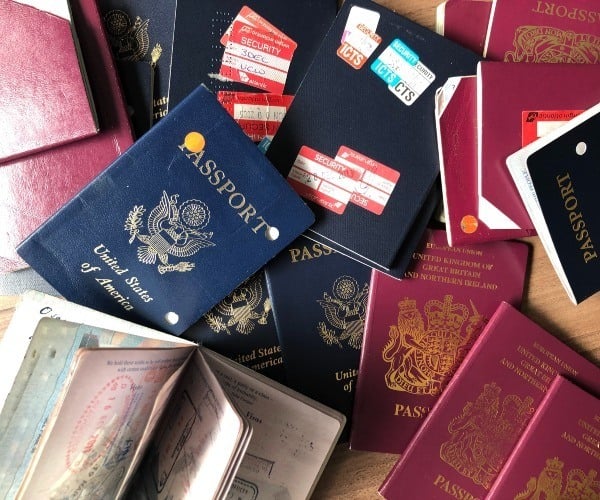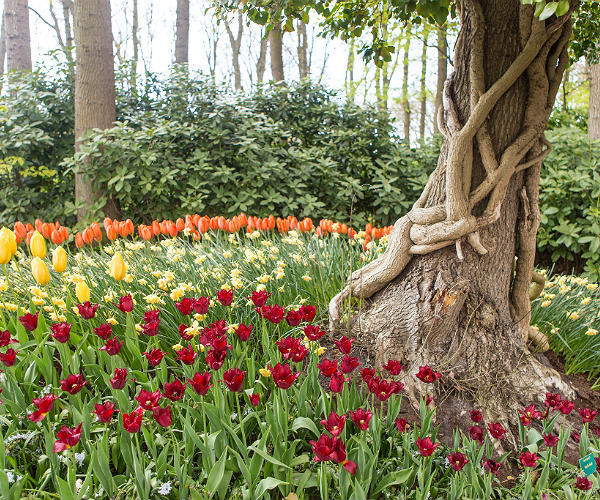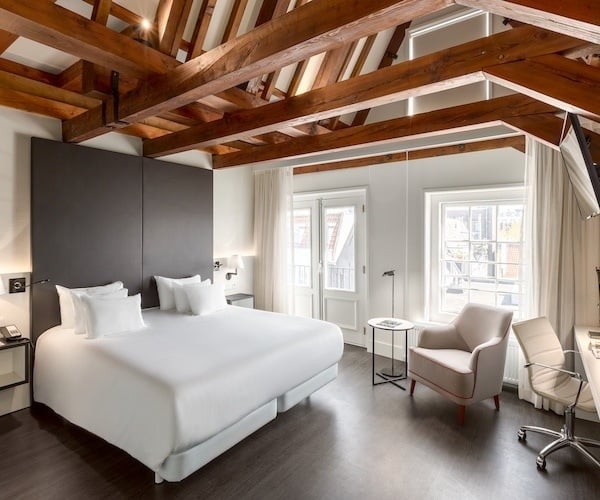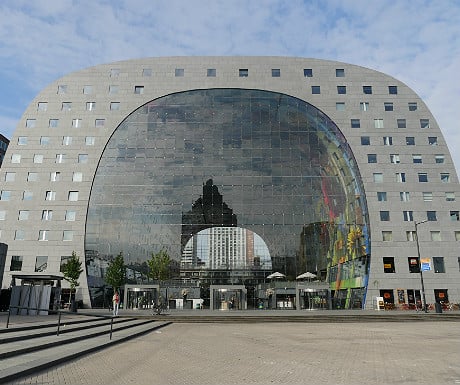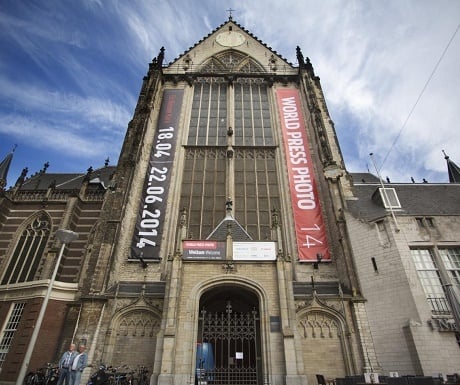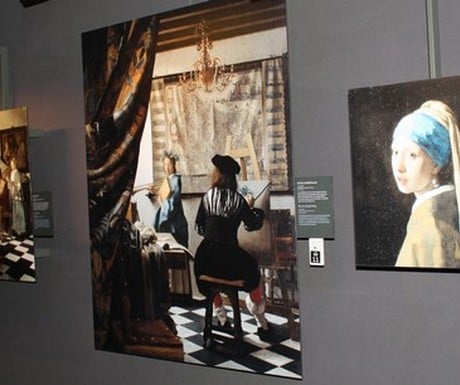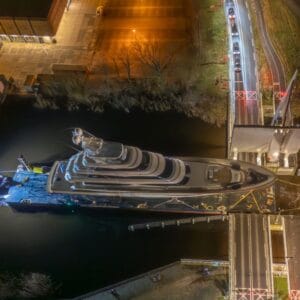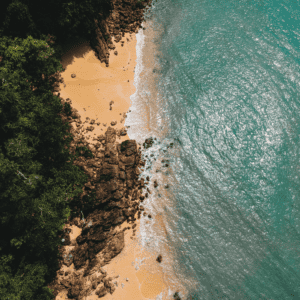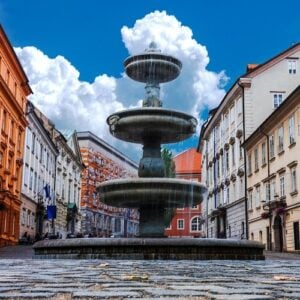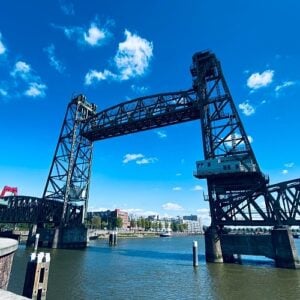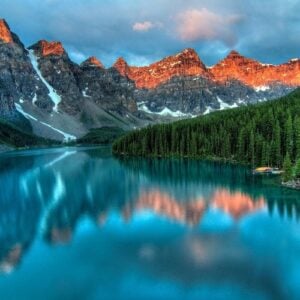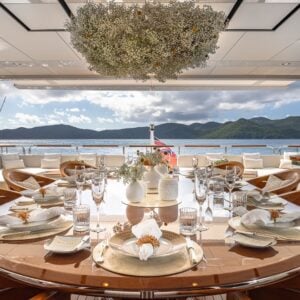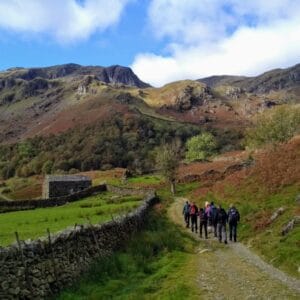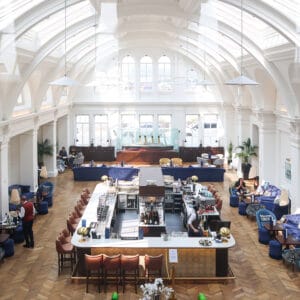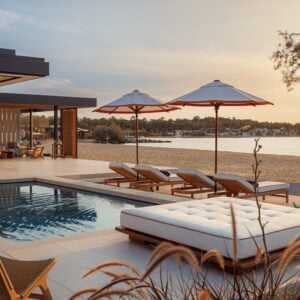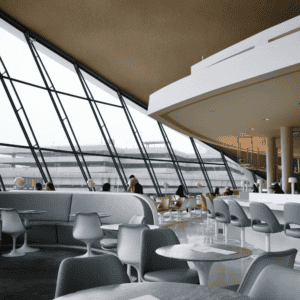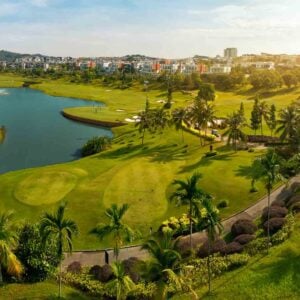Netherlands Travel Guide
Home > Travel Guides > Netherlands Travel Guide
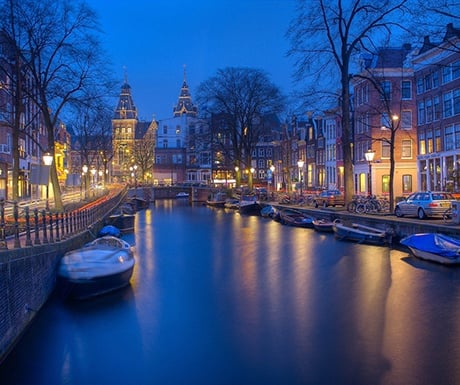
LUXURY TRAVEL
Netherlands Travel Guide
The Netherlands is a picturesque country of canals, coastlines, towns and villages crowned by the city of Amsterdam and its many sights and attractions. This is a country that offers some of Europe’s best history, art, culture, luxury and entertainment in one small, easy-to-navigate package.
- Introduction to the Netherlands
- History of the Netherlands
- Where to stay in the Netherlands
- Accommodation in the Netherlands
- Places to visit in the Netherlands
- Things to do in the Netherlands
- Food in the Netherlands
- Getting around the Netherlands
- When to visit the Netherlands
- Events in the Netherlands
- Luxury travel tips
- Language and culture
- Useful phrases
- Weather in the Netherlands
- Useful information
Introduction to the Netherlands
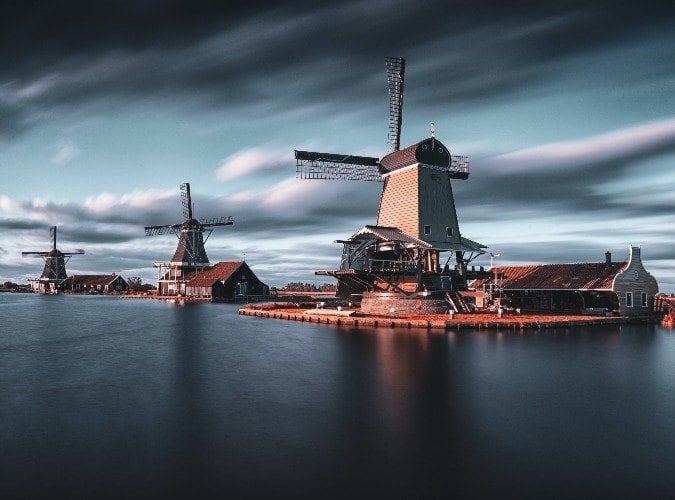
The Netherlands is a thriving, stable and visitor-friendly country at the heart of Northern Europe which continues to draw tourists to see its wonderful sights and history, and also acts as a major transport hub both for sea and air travel.
Many refer to it as Holland, but this is in fact just a region of the Netherlands, which is the name of the country as a whole.
It borders Belgium to the south, Germany along its eastern border, and the North Sea along its western and northern sides. Much of its population is in the centre and south of the country, with Amsterdam, Rotterdam, The Hague, Maastricht and Eindhoven as its main cities. There are some more scenic parts, however, like Zeeland which is a coastal area of villages, islands and beaches, and historic Middelburg as its main town. The north is also a relatively quiet and rural area comprising agriculture, waterways, villages and the sandy offshore Friesian Islands.
Most visitors tend to focus on Amsterdam – and for good reason; the largest city is also home to most of its attractions, like museums, shopping, galleries, luxury hotels and entertainment. It is a city where you can experience the artworks of Van Gogh, Rembrandt and Vermeer, or reflect on the legacy of war at Anne Frank House.
But the rest of the country should not be ignored. There are many other cultural and historic attractions to be discovered in other cities, and the open spaces to the north are perfect for a relaxing getaway where you can enjoy walking, cycling, watersports, luxury retreats and some amazing scenery and flowers.
Wherever you go, the people of the Netherlands will welcome you. The Dutch are a friendly, outgoing and modern people who love to show off their country and offer hospitality to visitors.
Amsterdam
While it is not the capital of the Netherlands (that honour goes to The Hague), Amsterdam is by far the most visited. It is so easy to get to thanks to its giant airport at Schiphol, its large central train station with links all over Europe, and the nearby port at Ijmuiden.
Perfect for a weekend city break or a longer vacation, Amsterdam is a pretty city built around an expanding semi-circle of canals running off the River IJ which passes through the fairly compact city between the North Sea and Ijmeer lake.
Amsterdam is a city of culture, with many museums and galleries to its famous former residents, and on every canal and street stand original houses and buildings – some of which seem to lean at incredible angles – which ooze history and tell the city’s story.
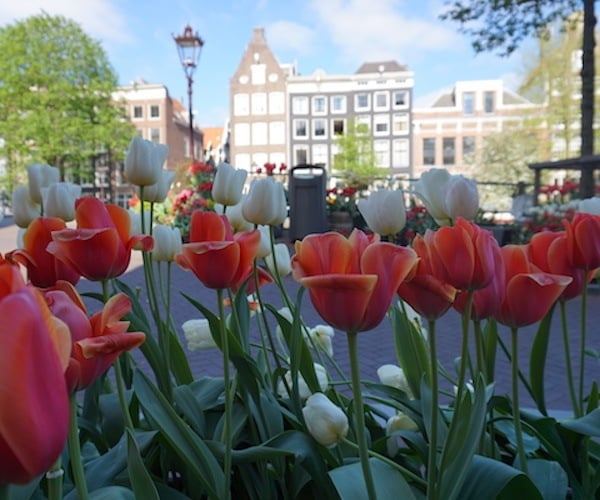
This is also a city where relaxing at a coffee shop, shopping in boutiques or enjoying an evening meal are essential activities for visitors. Amsterdam does, of course, have its famous red light areas and busy bars, but these are only part of the city and easily avoided.
History of the Netherlands

The lowland country of the Netherlands is formed around a river delta on the edge of the North Sea. It was occupied for centuries by different peoples, from the Roman Empire, to the Saxons, Frisians and the Franks.
The region became amalgamated into an area known as Burgundian Netherlands, which also included Belgium, Luxembourg and parts of France in the 1400s, and by 1581 religious unrest had led to the split into predominantly Catholic regions in the south, and Protestant regions in the north; this northern region is roughly what we know today as the Netherlands.
The Dutch people were known to have a zest for developing in terms of science, trade and industry, evidenced by the resulting global expansion, as well as the cultural and physical growth of the cities of the Netherlands. The Dutch Golden Age of the mid-1600s saw the creation of a Dutch Empire, and the creation of the Dutch East India Company which linked this small European country with its colonies in Asia and established trade around the world.
Another brief spell under French control in the early 1800s followed, but from 1815 the United Kingdom of the Netherlands was created, with its own monarchy, and control over Belgium and Luxembourg. These became independent again in 1839, leaving the new constitutional monarchy of the Netherlands as we know it today.
Despite occupation by the Nazis in World War II, thankfully the Netherlands has retained much of its historic buildings, especially in its main cities and medieval towns. A growth in population, farming and the need for land has seen the country tame much of its areas of water, creating new land and increasing the size of the country. This has also acted as protection from the sea and flooding which posed a constant threat to the people of this low-lying nation, where parts of the land are below sea level.
Where to stay in the Netherlands
Amsterdam is naturally the centre of attention in the Netherlands, and makes the most central and convenient place to stay. It has hundreds of hotels of all styles and price ranges, and thanks to the excellent road, rail and air network it is an easy place to get to and travel from. It does tend to be more expensive than the rest of the country, however.
Amsterdam’s most popular hotels are in the centre, where everything from large international chains to small boutiques and hostels are available. However, for something different you might consider the town of Haarlem which is around 15 minutes away from Amsterdam, but offers its own pleasant array of hotels and is quieter than the big city.
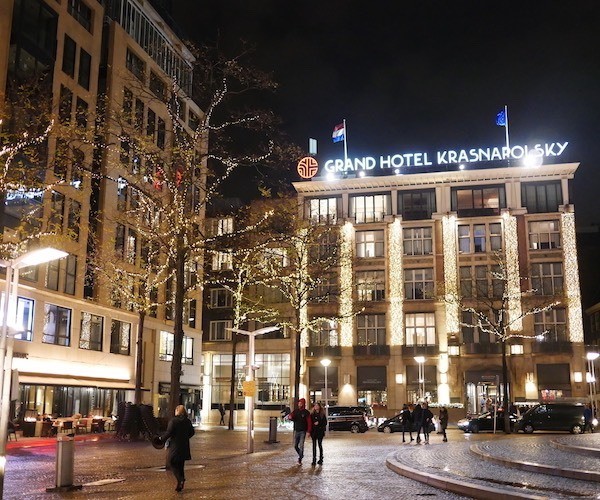
Utrecht, Leiden, Rotterdam and The Hague are also good bases, with plenty of hotels to choose from, history and culture to enjoy, and an easy transport network to the rest of the country (The Hague tends to be more businesslike). Eindhoven and Maastricht are also easy to get to and offer good accommodation options, if a little more distant from Amsterdam.
For a more rural escape, the north of the Netherlands offers the perfect getaway. It’s not all about windmills and tulips, but they do exist. Towns like Juliandorp, Petten, and even the Frisian Islands have quiet, boutique hotels, clean beaches and plenty of open spaces to explore.
In Zeeland, in the south west of the country, is another area of rural beauty and beaches, with many small villages and resorts. The historic seafaring town of Middelburg is a perfect base, and Zouteland offers beaches and family fun.

Accommodation in the Netherlands
Like many countries which are so popular to visitors, the Netherlands is constantly being reinvented with newer, more interesting hotels and places to stay. From quiet B&Bs to country hotels, self-catering, boutique hotels, big brand hotels and luxury accommodation, you’ll find it all here.
Most of Amsterdam’s hotels are located within the city centre (as well as around the airport). But to avoid the crowds or any noise, you should consider an area like Westerpark, Jordaan or Oud Zuid which are all close enough to the centre but are less rowdy. Hotels like the Verdi or Hotel Il Fiore are pleasant and comfortable places to try.
One of Amsterdam’s best boutique hotels is the Hotel Weber, or you might try and Airbnb property like the First-Class Houseboat Studio.
Of Amsterdam’s luxury hotels, the finest include the Hotel Victoria (operated by Park Plaza) with its plush Carstens restaurant, The Ambassade – a favourite with authors, set in traditional canal houses, the boutique The Dylan hotel in the shopping district, or The Pulitzer which has been created from 25 different 17th centurty canalside houses.
In Rotterdam, the nhow Hotel offers skyscraper chic overlooking the river, while in The Hague you can’t go far wrong with a stay at the Hotel Indigo Palace Noordeinde set in a former bank building.
Eindhoven has some great boutique hotels, like the quirky Inntel Hotels Art Eindhoven, and Maastricht has the unique 5-star Kruisherenhotel set in a 15th century church.
In the north of the Netherlands, try the Hotel Schimmelpenninck Huys in Groningen, set in a Napoleonic- Era mansion, or one of the many wonderful B&Bs and self-catering cottages on the West Frisian Islands.
In Zeeland, some of the best hotels include the Boutique Hotel by Juuls in Domberg, near the beaches, The Roosevelt in Middelburg, or rural Hof van Alexander Boutiquehotel on the island Schouwen-Duiveland.
Places to visit in the Netherlands
Amsterdam is often the first point of call for visitors to the Netherlands. This important city is one of Europe’s top destinations, and a marvel of cultural and historical attractions, not to mention its excellent entertainment, dining and nightlife. The city is built around a semi-circle of canals, which are lined with traditional Dutch buildings that are often centuries old. At the central point is Dam Square where street artists entertain the crowds and the National Monument stands as a reminder to the country’s victims of war.
In all directions there are things to see. You can visit Anne Frank House, the world famous Rijksmuseum of art, the Van Gogh Museum, or even something more risqué like the Torture Museum and Sex Museum. Amsterdam has many wonderful cafes, bars and restaurants, with a lively nightlife as well as quiet spaces like Vondelpark.
Not far from Amsterdam is Haarlem, a smaller city nearer the coast which has a traditional centre and many historic buildings. You can visit the Teylers Museum, or the Franz Hals Museum featuring many famous works of art. Haarlem is known as the heart of the bulb-growing region and home of the Annual Bloemencorso Parade.
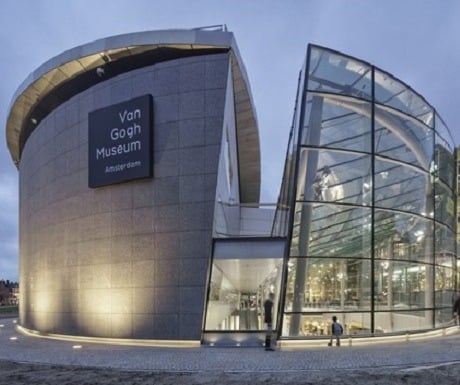
The university city of Utrecht is also a short distance south of Amsterdam. It’s Middle Age centre is built with a canal system and boasts many historic buildings as well as a thriving nightlife.
Rotterdam is another of the Netherlands’ most important cities, and a great place for exploring the southern part of the country. Its centre mixes modern with historic, and is a great centre for shopping, hotels and dining. In the southern part of the city is the Delfshaven harbour area lined with pretty buildings, cafes and home to many carnivals and outdoor events in the summer. Across the water is the preserved Rotterdam cruise liner.
Almost joined to Rotterdam is The Hague – the capital of the Netherlands and famous as the home of the Dutch Royal Family and the International Court of Justice. Its main attractions include the Royal Picture Gallery Mauritshuis and the GEM Museum of Contemporary Art. In fact, there are many museums, galleries and historic buildings to explore here.
Just to the north of Rotterdam is Gouda which is easy to do in a day trip. It is an old, traditional Dutch city with a historic core ringed by canals, and with cycles everywhere. It is most famous for the cheese which bears its name and is exported all over the world, and you can discover more at the Thursday Gouda Cheese Market on Markt Square.
Also between Rotterdam and The Hague is Delft, which is one of the Netherlands’ most unspoiled towns. It has buildings of traditional architecture, a museum to the Eighty Years War, and the Johannes Vermeer Centrum is dedicated to the life of the artist. Naturally the Royal Delft earthenware factory is also worth a visit, with a museum and tours.
South west of Rotterdam is the coastal island region of Zeeland. Popular in the summer, its beaches attract locals as well as tourists, and there are many little villages, historic towns, family attractions and scenic views to enjoy. Easily reached by road from Amsterdam or Rotterdam, you can make a day of it, or stay longer.
At the most southern point of the Netherlands, surrounded by neighbouring countries, is the city of Maastricht. The focus of its historic centre is the Vrijthof, a large square ringed by pretty outdoor cafes and the large St Servatius Basilica. The city boasts many other museums, galleries and historic buildings, like the old fortifications which are best seen in the many parks which surround the city.
The northern part of the Netherlands is more rural and less visited, but it is a place of great beauty with beaches and small coastal towns to enjoy in the summer, like Makkum, Eggmond aan Zee and Pieterburen.
A trip across to the West Frisian Islands is also worth it for getting away from it all. Texel is the largest and most developed, and includes a national park and great beaches. There are many places to stay, and the historic town of Den Burg to explore. Ameland is another island worth visiting, with a large sandy beach along its northern shore.
Groningen is the largest city in the northern Netherlands. A university town, it is also an attractive place to visit with old buildings, canals, shopping, cafes and many small museums. Try the Groninger Museum which is a really unusual building built over the main canal.
One of the largest inland areas of beauty in the Netherlands is the De Hoge Veluwe National Park in the east of the country, near Ede and Arnhem. It is a perfect place to explore, with woodlands, sand dunes and heathlands. It is one of the country’s largest nature reserves, at 5,400 hectares, and nearly 2,000 cycles are provided free of charge to help you explore.
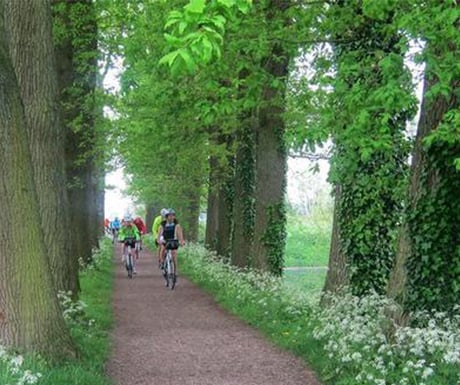
Things to do in the Netherlands
Top among Amsterdam’s attractions are those telling the story of its history and art. The Anne Frank House is a reminder of the horrors of war and the heroic efforts of some to defy oppression. It is one of the city’s most visited attractions.
The Rijksmuseum is dedicated to the arts and history of the city. It has been here, in this large building on Museum Square, since 1885 and displays over 8,000 objects of art and history at any time, including works by the masters Frans Hals, Rembrandt and Johannes Vermeer.
The Van Gogh Museum holds the largest collection of this Dutch painter’s works, as well as many of his contemporaries, and is one of the world’s most popular art museums.
Other things to do in Amsterdam include taking a boat trip along the canals, wander the Vondelpark, visit the Stedelijk Museum of art or the Rembrandt House Museum, or simply sit at a café and watch the world go by.
To the north of Amsterdam is Zaanse Schans. This is an open-air museum recreates a traditional Dutch village from original buildings, with windmills, shipyard, pewter factory and houses. Live demonstrations and activities make it a great family day out.
The Netherlands’ flower-growing industry is a major attraction to visitors. The region to the west of Amsterdam, with Haarlem at its heart, is the main bulb-growing area. The Keukenhof Gardens is the main attraction related to the flower industry, and is the world’s second largest flower garden. As well as the magnificent displays of colour, each year there are markets, parades and flower shows held here.
Something very Dutch to do on your visit is cycle. Much of the population use this mode of transport for getting around, where narrow streets and canals often preclude the use of cars. Visitors can hire bikes everywhere and explore their surroundings, which is a great way to see the sights. Some of the most cycle-friendly places in the Netherlands are Utrecht, the little picturebook town of Giethoorn, or even central Amsterdam itself.
For an alternative to the attractions of Amsterdam, visit the many small museums and historic buildings at the heart of Maastricht or The Hague, which are usually quieter and offer something different to the well-worn path.
Other family places to visit include Madurodam miniature world, Artis Royal Zoo, or Efteling – one of the world’s oldest theme parks.
Naturally the Netherlands offers a lot for outdoors enthusiasts, from wandering the miles of sandy beaches along its shores, especially in the north of the country, to watching wildlife in the De Hoge Veluwe National Park. There are also many country cycle routes, golf courses and places to enjoy watersports like sailing and kayaking.
Any trip to the Netherlands is not complete without enjoying shopping. As well as the many districts in Amsterdam, both Haarlem and Leiden have been voted the best shopping cities in the country, and, while Maastricht is known for its fashion stores. For cheese head to Edam or Gouda, and for traditional pottery head to Delft.
Food in the Netherlands
There are lots of great foods to try in the Netherlands. Traditional foods you may have heard of include Gouda and Edam, which are staples not just for tourists, but as part of every Dutch person’s daily life. Another type of cheese you may not have heard of and should try is Old Amsterdam, which is softer.
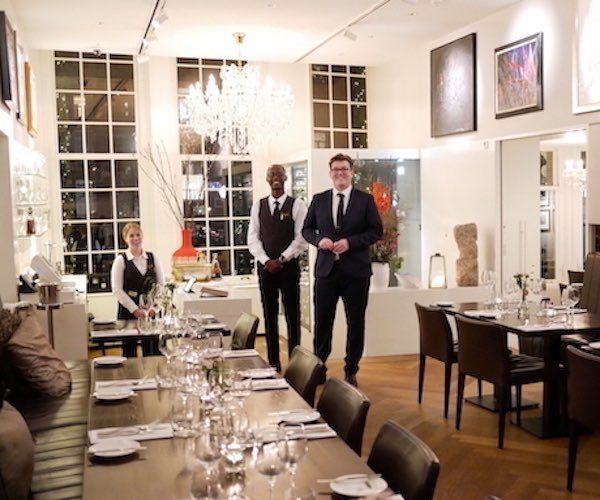
If you’re looking for something sweeter, stroopwafels are popular as both a dessert or a tasty treat alongside a coffee. These tiny pancake-like pastries have two sides, with a layer of sticky syrup inside. Dutch pancakes are also popular as a sweet treat. Often larger than American and French pancakes, they also usually come with a variety of interesting toppings to choose from.
When it comes to restaurants, the Netherlands has many wonderful options. In Rotterdam, the Michelin-starred Fred is considered one of the country’s best, serving the finest French cuisine. The 100-year-old Restaurant Old Dutch is another staple in Rotterdam.
In Amsterdam there are many great places to eat. Some of the more famous include Restaurant de Kas, set in an old greenhouse (with vegetables grown on site), Sazanka is Europe’s only Michelin-starred Japanese restaurant, Jansz is set in an old apothecary shop by a canal, and Stork serves some of the best seafood in the city (it’s on the north shore of the IJ river).
For a more romantic experience, you can take a dinner cruise along Amsterdam’s canals past historic houses and under bridges strung with fairy lights.
The Zeeland region has an incredible seven Michelin-star restaurants, with many naturally influenced by the sea. Try Inter Scaldes near Kruiningen.
In Maastricht you can find a mixture of influences from surrounding French, Belgian and German regions, but Beluga is a place to find food from its celebrated Dutch chef, with a delicious six-course tasting experience complemented by beer brewed on site.
In Eindhoven, it’s hard to beat the views from VANE which is located on the 13th floor of the NH Hotel in the city centre. Start your evening with a drink in the VANE Skybar, then enjoy a meal of local ingredients and carefully selected wine pairings.
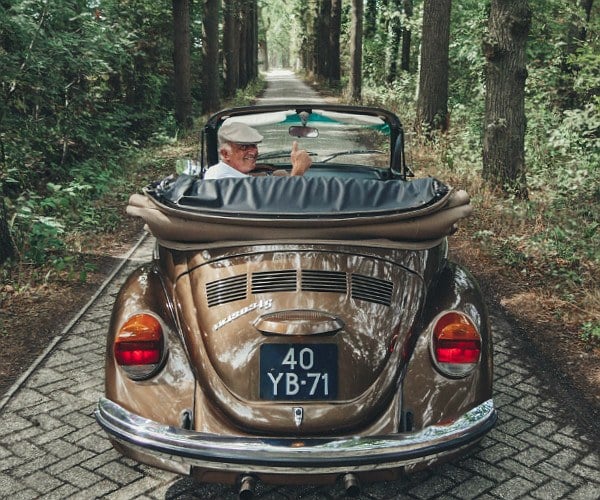
Getting around the Netherlands
The Netherlands is blessed by one of Europe’s largest and best connected airports. Amsterdam Schiphol is located a few miles south of the city centre and is home to KLM Royal Dutch Airlines – one of the oldest in the world, and with a worldwide network of routes, including many daily departures to the UK and other European airports.
Schiphol Airport has a large train station underneath the terminal which has multiple daily services to Amsterdam Centraal Station (journey time of around 20 minutes), as well as links to cities all over the Netherlands and into Europe, which means you don’t need to connect elsewhere. There are also many local and regional bus routes from Schiphol.
Centraal Station is a large rail hub close to all of Amsterdam’s main streets and canals. It has train links all over the Netherlands and Northern Europe, including a Eurostar service to London.
It’s easy to walk around Amsterdam, but most locals choose to cycle. Bikes can be hired from various locations, including Centraal Station, Dam Square and Leidseplein. There are many rental stores, but it’s often best to reserve one in advance from a company like A-Bike or Yellow Bike.
Because central Amsterdam is largely made up of canals, pedestrianized areas and narrow streets, there are few bus routes to get around. Taxis can be hired to get to more specific destinations, and if you need to cross the IJ there are free ferries from Centraal Station and other points.
Amsterdam also has a Metro system which is particularly useful for reaching the suburbs.
Elsewhere in the Netherlands, bus and rail networks are extensive, particularly in the central and south regions, and cities like Rotterdam, Eindhoven, Lelystad, The Hague and Breda. You can easily catch a train to northern cities like Leeuwarden and Groningen, but it’s best to hire a car to explore more rural regions along the north coast, for example.
The Friesian Islands can be reached by ferry, with crossings from Den Helder, Harlingen and Holwerd.
When to visit the Netherlands
The best weather in the Netherlands is during the summer months of July and August. It is generally warmer between April and October, making these the perfect months to plan a visit. The northern coast, beaches and Friesian Islands are at their best and most accessible during the summer.
However, the Netherlands are open to visitors year-round and planning a city break in the winter can make a memorable experience where cosy cafés offer warm drinks, Christmas lights twinkle, and the museums and attractions are unlikely to be busy. The peak summer months are when you are likely to experience queues at attractions and busy streets, and higher prices at hotels, particularly in Amsterdam.

If you want to experience the famous tulips blooming, then the best time to visit is in the Spring, which can be combined by a cycle or road trip through the countryside to take in the colours.
Events in the Netherlands
Here is a comprehensive list of the Netherlands’ public holidays and festivals.
January
Rotterdam International Film Festival
February
ABN AMRO World Tennis Tournament, Rotterdam
March
Windmill Days, Zaanse Schans
The European Fine Art Fair, Maastricht
Opening of Keukenhof Gardens, Lisse
April
National Museum Weekend, Nationwide
Bulb District Flower Parade, Noordwijk to Haarlem
Koninginnedag (Queen’s Day), Nationwide
Alkmaar Cheese Market
May
Herdenkingsdag (Memorial Day), Nationwide
Bevrijdingsdag (Liberation Day), Nationwide
National Windmill Day, Nationwide
National Cycling Day, Nationwide
Tong Tong Eurasian Festival, The Hague
June
Holland Festival, Amsterdam, the Hague, Rotterdam, and Utrecht
Vlaggetjesdag (Flag Day), Scheveningen
Amsterdam Roots Festival
July
North Sea Jazz Festival, Ahoy, Rotterdam
August
Amsterdam Gay Pride
Grachten Festival (Canal Festival)
Festival Oude Muziek (Festival of Early Music), Utrecht
September
Open Monumentendag (Open Monument Day), Nationwide
State Opening of Parliament, the Hague
October
Leidens Ontzet (Relief of Leiden) Procession, Leiden
International Horti Fair (flowers), Amsterdam
November
Crossing Border Festival, TheHaag
December
31st – New Year Celebrations
Winterland Maastricht Christmas Market
Gouda by Candlelight
Luxury travel tips
Luxury is never far away in the Netherlands’ top cities. In Amsterdam there are elegant hotels like the Amrath Grand, the Conservatorium and the Pulitzer, while attractions like the Rijksmuseum and Van Gogh Museum highlight some of the country’s treasures. There’s no shortage of Michelin star restaurants like The White Room and Sazanka, and the private tasting room at the Wynand Fockink liquor store is something all drinks connoisseurs will enjoy.
Cities like Rotterdam, Leiden and The Hague have many great boutique hotels, while there are exquisite resort hotels around Zeeland and the northern coast and islands.
Getting around in style is easy. Luxury travel companies in most cities offer airport-to-hotel services, and many hotels can arrange chauffeur driven travel around the country, or luxury day trips to see the sights. You can take luxury guided tours to see the tulips, with some including cycle and sailing trips, and many tour operators offer canal trips in various Dutch cities.

Uber is available throughout the Netherlands, and is an easy way to avoid the bustle of public transport.
Many cruise operators will include Amsterdam or Rotterdam in their Northern Europe itineraries, which include visits to the main attractions of the Netherlands and guided tours.
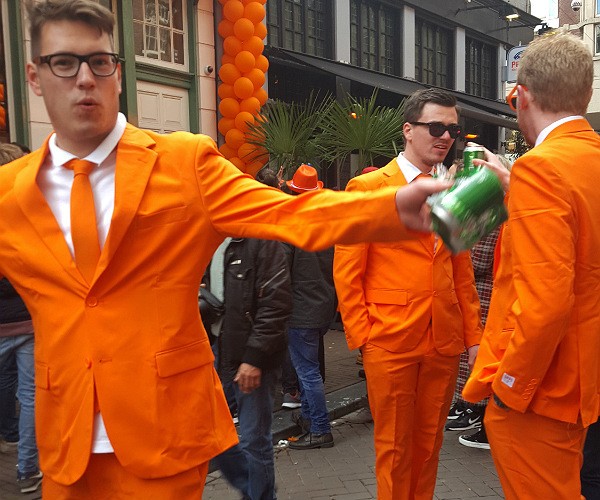
Language and culture
The Dutch are fairly good linguists and English is commonly understood and spoken by much of the population to some degree, particularly in the cities and any areas where tourists visit. German and French are also understood by many Dutch people living near the borders.
You can expect to find the Dutch people to be hardworking, considerate, family-oriented and practical. They are fairly conservative and value their appearance, cleanliness and privacy. Etiquette is a high priority, especially around eating, meeting new people, and in business situations.
Useful phrases
- Hoi / Hallo / – Hello (hoy / hah-loh)
- Daag / Doei – Bye (dahk / doo-ee)
- Tot ziens – Goodbye (toht zeens)
- Ja – Yes (yah)
- Nee – No (nay)
- Goedemorgen – Good morning! (khoo-duh-mawr-ghuh)
- Goedenavond – Good evening! (khoo-duh-nah-fohnt)
- Graag gedaan – You’re welcome! (khrahkh khuh-dahn)
- Hoe gaat het met u? – How are you? (hoo khaht ut meht ew)
- Goed / Heel goed – Fine / Very Well (khoot / hayl khoot)
- Ik heet… – My name is… (ik hayt…)
- Dank u wel / Dank je wel – Thank you! (dahnk-ew-vehl / dahnk-yuh-vehl)
- Alstublieft / Alsjeblieft – Please (ahlst-ew-bleeft / ahl-shuh-bleeft)
- Pardon, wat zei u? – Pardon me? (pahr-dohn, vat zay ew)
- Sorry – Sorry! – (saw-ree)
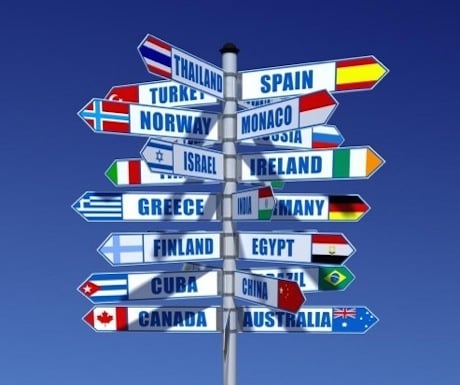
Weather in the Netherlands
Visiting the Netherlands soon? See below for the latest weather forecast for the Netherlands.
THE NETHERLANDS WEATHERUseful information
Timezone
UTC +1 Central European Time
UTC +2 Central European Summer Time
Currency
The currency in the Netherlands is the Euro which replaced the Dutch guilder in 2002. See www.xe.com for current exchange rates with the British Pound and the American Dollar.
Power
The Netherlands operates on 230V/50Hz system and has two-pin plug sockets accepting type C or F or plugs. Appliances with a voltage of 220-240V can be used here with the correct adapter. UK appliances would need a standard two-pin to three-pin adapter.
WiFi
Free Wifi can be found in many restaurants, cafes, museums, parks and on trains and some buses.
Tipping
Tipping in the Netherlands is common, and based around service. In most situations if you believe that the service was good in bars and restaurants, you should tip approximately 10%. In restaurants, a service charge may often be included on the bill, so check before giving any to the waiter.
Telecommunications
There are many mobile network providers in the Netherlands. The main ones are KPN, T-Mobile and Vodafone. GSM/GPRS compatible SIM cards are needed and can be bought in some smaller, and most of the larger, mobile phone network stores. UK phones can be used here but if you wish to use a Dutch SIM card, you will need to have your phone unlocked in one of the smaller, independent phone shops.
